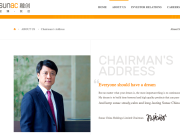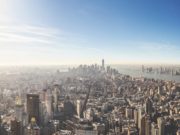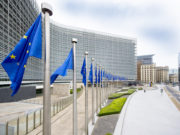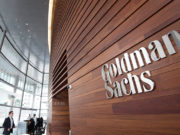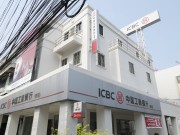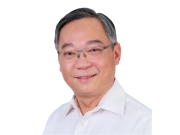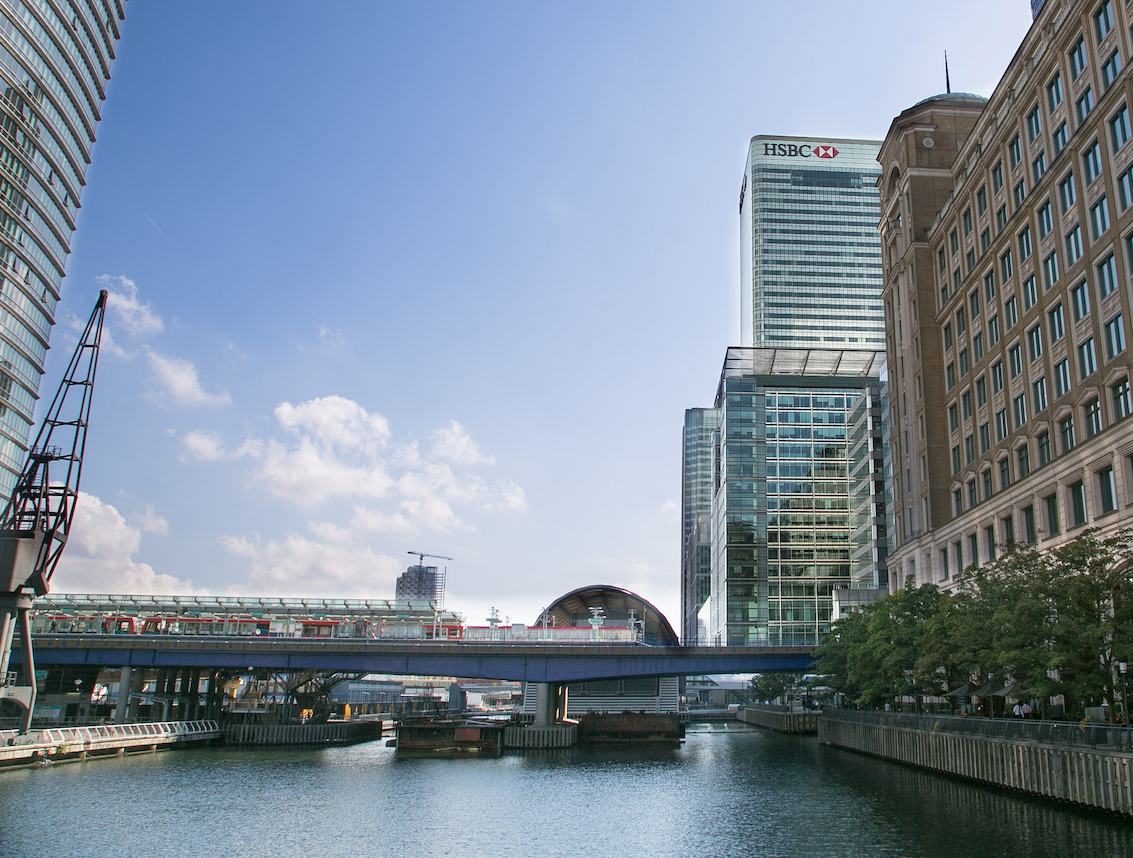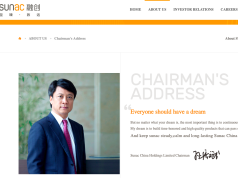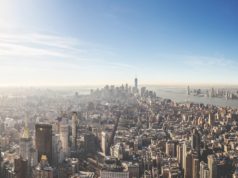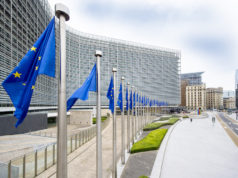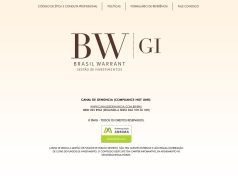HSBC Global Private Banking 2022 Investment Outlook: The Big Reset
10th December 2021 | Hong Kong
HSBC Global Private Banking has released the 2022 Investment Outlook: The Big Reset. After a V-shaped recovery driven by global reopening in 2021, HSBC Global Private Banking expects global economic growth and earnings improvement will moderate but remain respectable in the mid-cycle phase heading into 2022. Global interest rates should remain well below normal despite faster tapering and rate hikes by the Federal Reserve, extending the “low but volatile” rate environment into 2022. Positioning for solid mid-cycle growth, it maintains a risk-on investment strategy with overweight allocation to global equities and preference for US, European and Asian equities. It seeks selective carry opportunities in global high yield credit, as well as emerging market and Asian hard currency bonds. To manage market volatility, it focuses on global diversification with emphasis on quality assets, structural growth winners and alternative investments. It captures structural opportunities from the big reset of the global economy driven by the trends of Asia’s growth model shift, digital transformation and net zero transition.
“ The Big Reset “
Transition to the Mid-Cycle Phase

Fan Cheuk Wan, Chief Investment Officer for Asia, Global Private Banking and Wealth at HSBC:
“ As we head into 2022, the global economy has moved from the reopening to the mid-cycle stage. In that part of the economic cycle, equity market returns typically slow but remain respectable although market volatility is expected to rise. Our investment strategy positions for the policy transition towards gradual monetary and fiscal normalisation. We expect inflation will come down some time in 2022, and the four rate hikes that we expect from the Federal Reserve between June 2022 and September 2023 are slower than what we have seen in the previous US tightening cycles. This should remain supportive of our risk-on strategy with overweight allocation to global equities and preference for US, European and Asian equities. We seek selective carry opportunities in global high yield credit, as well as emerging market and Asian hard currency bonds.
The Omicron variant adds uncertainty to the global supply chain disruptions, raising the risk that the fall in inflation could be delayed to H2 2022. We expect the Federal Reserve will accelerate the pace of tapering by doubling monthly reduction of asset purchases to USD30 billion from USD15 billion in December, paving the way for two rate hikes in June and September 2022. Market concerns about inflation, policy tightening and Omicron risks will keep market volatility high in the coming months. To hedge policy tightening and inflation risks, we maintain our overweight position on Global Financials and Consumer Discretionary stocks and underweight Industrials stocks. We mitigate market volatility through our overweight position in hedge funds which bring downside protection and alternative sources of returns to our portfolios.
We think investors should focus on the big picture and their long-term investment goals, looking beyond short-term market noise and policy uncertainty. Big structural and multi-decade trends such as the net zero transition and digital transformation will create new growth industries. It is important for investors to position in long-term winners of the big reset, such as industry leaders in the biotech revolution, energy transition, biodiversity conservation, metaverse innovation, automation and artificial intelligence disruption.”
Remaking Asia’s Future and China’s Great Transition
In response to pandemic headwinds, supply chain bottlenecks and the energy crunch, governments in Asia have ramped up investments in supply chain revamps and technology upgrades to remake their economies into a more sustainable and resilient growth model. Being the home of 80% of global semiconductor manufacturing capacity, Asia is well placed to lead the world’s electronics supply chain upgrade and technological innovation to meet unabated demand growth for chips resulting from the global wave of digitalisation and automation.
Accounting for 52% of global carbon emissions, Asia stands out as a global leader in energy transition and clean energy investments. Asia currently has 45% share of global installed renewable capacity, well above 25% in Europe and 16% in North America. To meet China’s climate goals, the International Energy Agency estimates China would need to invest more than RMB200 trillion (equivalent to 200% of GDP in 2020) over the next four decades to achieve carbon neutrality by 2060.
Fan Cheuk Wan, Chief Investment Officer for Asia, Global Private Banking and Wealth at HSBC:
“China’s pursuit of ‘common prosperity’ and its net zero transition will drive a massive structural shift of its economic model from property construction towards high-end manufacturing and green investments. This reflects a significant change from its decades-long focus on quantity of growth towards the new strategic emphasis on high-quality, low-carbon and inclusive growth. China’s great transition will bring significant impact on the Asian and global economies given it is the world’s largest consumer of commodities, primary energy and chips.”
Staying Positive on Asian Equities and Credit
HSBC Global Private Banking maintains a mildly overweight position in Asia ex-Japan equities and credit given resilient fundamentals and attractive valuations after the underperformance of Asian markets versus developed market peers in 2021. Within Asian equities, it is overweight Taiwan, Singapore, Indonesia and Thailand due to their positive fundamental outlook and attractive risk-reward profile. Overall, it is more constructive on the outlook of the ASEAN stock markets with supportive drivers of economic reopening in 2022. In search for carry opportunities in the Asian credit market, it maintains selective positioning in Asian investment grade bonds, Indonesian bonds, Chinese SOE issuers and better quality Chinese high yield issuers.
Fan Cheuk Wan, Chief Investment Officer for Asia, Global Private Banking and Wealth at HSBC:
“We expect the Asian markets will stay resilient to faster Fed tapering and rate hikes due to the substantial fundamental improvement of the regional economies since the ‘taper tantrum’ in 2013. We anticipate Asian central banks will stay more prudent in normalising monetary policy as compared to the previous US tightening cycles due to relatively subdued inflation and robust external balances in most countries. Consumer price inflation pressures are much more subdued across Asia than in the US and Europe as the region is less impacted by supply chain disruptions. Asia’s average core inflation has remained subdued at close to historical low levels.
We stay neutral on China equities and China USD credit as we look for better clarity on regulatory tightening. We expect China’s upcoming Central Economic Work Conference will set the policy tone to focus on economic growth stabilisation for 2022. Hence, we anticipate there will be more targeted policy easing measures in the coming months, including more reserve requirement ratio cuts, in order to boost domestic demand and support small-and-medium enterprises. We see a potential RMB2 trillion technology and green stimulus package, equivalent to 2% of GDP, to support GDP growth of 5.6% in 2022. The People’s Bank of China has recently announced a new relending tool to provide cheap funding for green bank lending, which offers strong funding support for sustainable development initiatives. We forecast the Hang Seng Index will rebound to 28,030 and the Hang Seng China Enterprises Index will recover to 10,270 by the end of 2022.”
2022 Global High Conviction Themes
#1 Next Generation Asia Tech Leaders
HSBC Global Private Banking highlights that there is already evidence across Asia as well as the world that companies are participating in the big reset, as capex is picking up, and companies put some of their bumper cash positions to work. In China, companies’ investments are in line with the country’s desire to become more technologically self-sufficient and upgrade its manufacturing.
Patrick Ho, Chief Investment Officer for North Asia, Global Private Banking and Wealth at HSBC:
“Asia is currently a global centre of technological innovation with mainland China, Japan, South Korea, Taiwan and Singapore being recognised as world leaders in the development of 5G technology, artificial intelligence, big data, semiconductor, fintech, automation and health sciences. Metaverse should take off with the successful launch of Oculus Quest 2 to be followed by social networking and fitness apps. Asia supply chains in displays, Fresnel lenses, waveguide optics and cameras should benefit from the metaverse innovation. Southeast Asian countries are picking up the opportunities from the recent supply chain disruption to attract new investments in advanced and traditional manufacturing.
China’s most recent Politburo meeting reiterated the priorities of manufacturing and technology upgrade. Local leaders in the innovative industries, the high-tech hardware industries, and the provision of critical technologies should benefit. We also see investment opportunities in electronics, machinery, electric vehicles, high tech materials and semiconductor in Japan, South Korea and Taiwan. In Southeast Asia, the digital economy should continue to expand. The manufacturing sector in the region should also benefit from automation adoption.”
#2 Asia’s Consumer Revival
Ho highlights that with rising vaccination rates, improvement in vaccines and medical breakthroughs in COVID-19 treatments, more Asian countries will continue to move away from lockdowns towards “Living with COVID-19” strategy. In our view, these developments should facilitate the economic reopening and recovery of consumer spending in Asia, supporting a rebound in the service industry.
Patrick Ho, Chief Investment Officer for North Asia, Global Private Banking and Wealth at HSBC:
“As the Southeast Asia countries gradually reopen their borders, their service industry should see rebounds in profitability. China’s further urbanisation, rising income levels, expansion of middle class and policies to support the job market and the economy should help improve consumer sentiment. All these should support demand for mass consumption, consumption upgrade, digital and green consumption and healthcare services. Asian consumer preference for local brands will likely continue. According to NielsenIQ’s report, 62% of Fast Moving Consumer Goods (FMCG) sales in the region comes from local brands.”
#3 China’s Green Revolution
China aims to reach the peak of its carbon emissions by 2030 and carbon neutrality by 2060. The International Energy Agency (IEA) estimates that China will need to invest an average RMB5 trillion every year till 2060 in clean energy and industrial upgrading to achieve carbon neutrality, with electrification likely the largest driver of green investments in the years ahead.
Patrick Ho, Chief Investment Officer for North Asia, Global Private Banking and Wealth at HSBC:
“Solar and wind energy installations are expected to continue to increase during the 14th Five-Year Plan. We expect the cumulative solar and wind installations to continue to rise to 602GW and 557GW in 2025, respectively, from 252GW and 282GW in 2020. The adoption of New Energy Vehicles (NEV) will pick up in China given policy support and change in consumer preference. We project NEV growth to reach 117%, 37% and 28% in 2021, 2022 and 2023, respectively. With increasing renewable energy mix and its intermittent nature, China needs to invest in energy storage capacity, smart grids as well as hydrogen as a clean energy fuel.”
#4 Asian Credit Opportunities
Ho highlights Asian investment grade credit, which accounts for 80% of the overall Asian credit market, has seen credit spreads remaining elevated compared to pre-pandemic levels and remains attractive versus their developed market peers. We see scope for credit spreading tightening for Asian investment grade credit in coming months.
Patrick Ho, Chief Investment Officer for North Asia, Global Private Banking and Wealth at HSBC:
“As government deleveraging efforts take effect, investing in Chinese property bonds would require balancing potential returns with careful management of the risks and the volatility in the market. Meanwhile, the Asian high-grade sector has remained resilient. We continue see credit opportunities in Asia, as the region offers an important source of yield pickup over developed market bonds. We increase our focus on quality issuers in Asian investment grade credit and Chinese state-owned enterprises. We also search for carry opportunities in Indonesian hard currency bonds, better quality Chinese green-tier developers and selected Indian hard currency corporate credit.”
HSBC:
- $481 Billion Apollo Capital Management Hires HSBC Private Bank Edward Moon as Head of Asia-Pacific Global Wealth
- European Commission Fines UBS, Barclays, RBS, HSBC & Credit Suisse $389 Million for FX Spot Trading Cartel
- HSBC Opens New Hong Kong Wealth & Para-Medical Centre for HNW Clients at K11 ATELIER Victoria Dockside
- HSBC Private Bank Launches eSignature for New Clients to Open Accounts Online in Asia
- HSBC Trustee with $200 Billion Assets Celebrates 75th Anniversary in Asia, Plants 7500 Tree Seedlings in Malaysia to Restore Rainforest
- HSBC Private Bank: 2021 Q4 Investment Outlook – Slower But Steady Wins the Race
- HSBC Private Bank Launches Secured Chat for Clients with Private Bankers on WhatsApp & WeChat
- HSBC Acquires AXA Insurance Singapore for $575 Million
- HSBC Private Bank Asia AUM Reaches $193 Billion, HSBC Asia AUM at $810 Billion
- HSBC Reports Profit of $8.4 Billion in 2021 1H, Global Wealth AUM at $1.7 Trillion and Asia at $810 Billion
- HSBC Hires UBS Stefan Lecher as Regional Head of Investments & Wealth Solutions APAC
- HSBC Private Bank Appoints Jackie Mau as Head of Global Private Banking for China, Target 5 Million HNWIs in China
- HSBC Private Bank Launches Online Trading Platform to 10 Markets, 20 Hours Support, $2 Million Per Trade and $10 Million Daily
- HSBC Private Bank Expands in Asia, Appoints Chris Harwood as New Market Head of ASEAN and Australia
- HSBC Appoints David Liao & Surendra Rosha as New APAC Co-CEOs, Peter Wong Retires
- HSBC & Nielsen Survey: 82% of China GBA Mainland Investors to Invest in Wealth Management Connect
- HSBC Wealth Business Grows in Asia to $800 Billion, Hires 1000 in 2021
- HSBC Private Bank Gives Family Office in Asia Access to Investment Bank and Private Deals
- HSBC, Citi and Standard Chartered to Add 6,600 Wealth & Private Banking Jobs in Asia
- HSBC Appoints Annabel Spring as Chief Executive of Global Private Banking
Sign Up / Register
Caproasia Users
- Manage $20 million to $3 billion of assets
- Invest $3 million to $300 million
- Advise institutions, billionaires, UHNWs & HNWs
Caproasia Platforms | 11,000 Investors & Advisors
- Caproasia.com
- Caproasia Access
- Caproasia Events
- The Financial Centre | Find Services
- Membership
- Family Office Circle
- Professional Investor Circle
- Investor Relations Network
Monthly Roundtable & Networking
Family Office Programs
The 2025 Investment Day
- March - Hong Kong
- March - Singapore
- July - Hong Kong
- July - Singapore
- Sept- Hong Kong
- Sept - Singapore
- Oct- Hong Kong
- Nov - Singapore
- Visit: The Investment Day | Register: Click here
Caproasia Summits
- The Institutional Investor Summit
- The Investment / Alternatives Summit
- The Private Wealth Summit
- The Family Office Summit
- The CEO & Entrepreneur Summit
- The Capital Markets Summit
- The ESG / Sustainable Investment Summit


